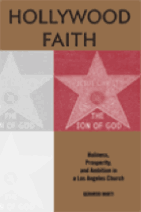
John Fea posted a quick blurb on the Religion in American History blog to highlight an excellent book on early American religion.
Encounters of the Spirit: Native Americans and European Colonial Religion
It seems that Native Americans influenced the early colonists in interesting ways. Here's the publisher's description:

The Way of Improvement Leads Home: Philip Vickers Fithian and the Rural Enlightenment in Early America
for pointing out this book. John Fea also keeps up his own blog.
Encounters of the Spirit: Native Americans and European Colonial Religion
It seems that Native Americans influenced the early colonists in interesting ways. Here's the publisher's description:
Historians have long been aware that the encounter with Europeans affected all aspects of Native American life. But were Indians the only ones changed by these cross-cultural meetings? Might the newcomers' ways, including their religious beliefs and practices, have also been altered amid their myriad contacts with native peoples?Carefully written, historically saturated books like this are always worth checking out. Thanks to Professor Fea, author of
In Encounters of the Spirit, Richard W. Pointer takes up these intriguing questions in an innovative study of the religious encounter between Indians and Euro-Americans in early America. Exploring a series of episodes across the three centuries of the colonial era and stretching from New Spain to New France and the English settlements, he finds that the flow of cultural influence was more often reciprocal than unidirectional.

The Way of Improvement Leads Home: Philip Vickers Fithian and the Rural Enlightenment in Early America
for pointing out this book. John Fea also keeps up his own blog.















 Consider this a post-Christmas wish. With this
Consider this a post-Christmas wish. With this 
